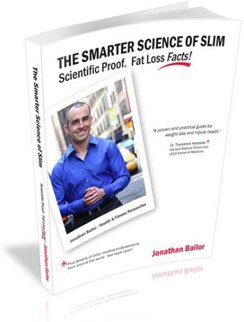Bellevue Man’s Long-Term Weight Loss Secret: Eat More & Exercise Less!
 I am just fascinated by Jonathan Bailor’s The Smarter Science of Slim. I love that this diet book, written by a Microsoft program manager, actually looks like a user’s manual of some kind. I’m terribly fond of the “cast of thousands” of graphs and charts that Bailor uses to present his research. And my ears always perk up when someone tells me I can eat more and exercise less, and still lose weight.
I am just fascinated by Jonathan Bailor’s The Smarter Science of Slim. I love that this diet book, written by a Microsoft program manager, actually looks like a user’s manual of some kind. I’m terribly fond of the “cast of thousands” of graphs and charts that Bailor uses to present his research. And my ears always perk up when someone tells me I can eat more and exercise less, and still lose weight.
Yes, I’ve read The 4-Hour Body. Remember that part where Ferriss starts to weigh his own feces? That’s where I began to think that maybe it was more of a cry for help. WebMD has some concerns, too.
Bailor, in contrast, has docs from Harvard, Johns Hopkins, and UCLA chiming in to support his approach–and why not, his bibliography runs from page 293 to 369, all in tiny type, making reference to research study after research study.
Let’s start with the less controversial part: Bailor advocates what he calls a SANE diet, and yes, that’s an acronym, but it’s also a philosophical position. He’s just telling you which foods are good to eat, and which are not, and sparing you obsessive calorie-counting and bizarre menus. On the whole, he sounds a bit like Michael Pollan-on-paleo. Avoid processed foods and sweeteners, and cut down on starches and grains. Feast on vegetables and fruits (especially berries), get plenty of protein, and fats aren’t terrible. (It turns out it’s worse to try to cover that “low-fat” taste with a multitude of hidden sweeteners.)
On exercise, Bailor mimics Pollan’s delivery: “Exercise forcefully. Not too often. Mostly eccentric.” Ten to twenty minutes a week should do it (for weight loss, obviously, not conditioning for sports).
Two elements of the book I drew my attention particularly. Early on, Bailor tackles the unsupported concept of one-calorie-equals-one-calorie, demonstrating that where you get your calories is important. But then he introduces the idea of metabolic “clogging,” which helps clarify the confusing history of weight loss. Two hormones, he says, insulin and leptin, work in tandem to manage our bodies’ energy stores. If our diets are out of whack, our hormonal balance gets skewed, too, with the result that whether we starve ourselves or gorge, we can pack pounds on while not feeling satiated.
Then he delivers a devastating critique of why our diets are out of whack to begin with, discussing the USDA’s “nutritionally unsound” food guides (with a raft of charts showing a host of obesity-related ills heading up and to the right after the guides are implemented), and correcting a bunch of misapprehensions about cholesterol, whole grains, and fat intake. High fructose corn syrup gets no free pass, and though I’ve seen it before, the list of almost 60 “hidden” sweeteners (the same, you’ll find, in candy bars and weight-loss bars) is still staggering.
We are not, he makes it clear, going to get much help from our co-opted government on obesity and diabetes and cardiovascular health; in fact, the war on obesity’s symptoms is likely to reinforce the entrenched positions that, say, soda companies have on official panels. All this is big business, especially diabetes.
In that sense, this is a necessary book, whether you have pounds to keep off or not. With apologies to William Carlos Williams, it is difficult to get the news from diet books, yet men and women die miserably every day for lack of what is found here.
One thought on “Bellevue Man’s Long-Term Weight Loss Secret: Eat More & Exercise Less!”
Leave a Reply
You must be logged in to post a comment.

 Daily Email Digest of The SunBreak
Daily Email Digest of The SunBreak
Eat more and exercise less? Try putting more gas in your car and driving less. It has to go somewhere! We humans just have expandable gas tanks! lol I used to do Billy Bo stuff but now I’m into Jillian Michaels workouts. I just don’t get tired of em…